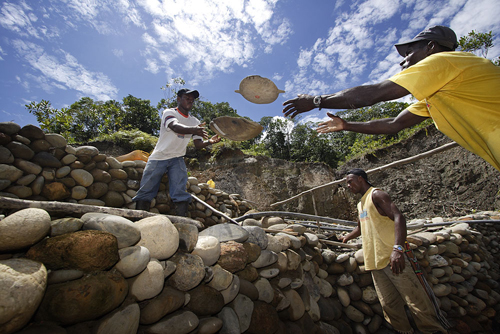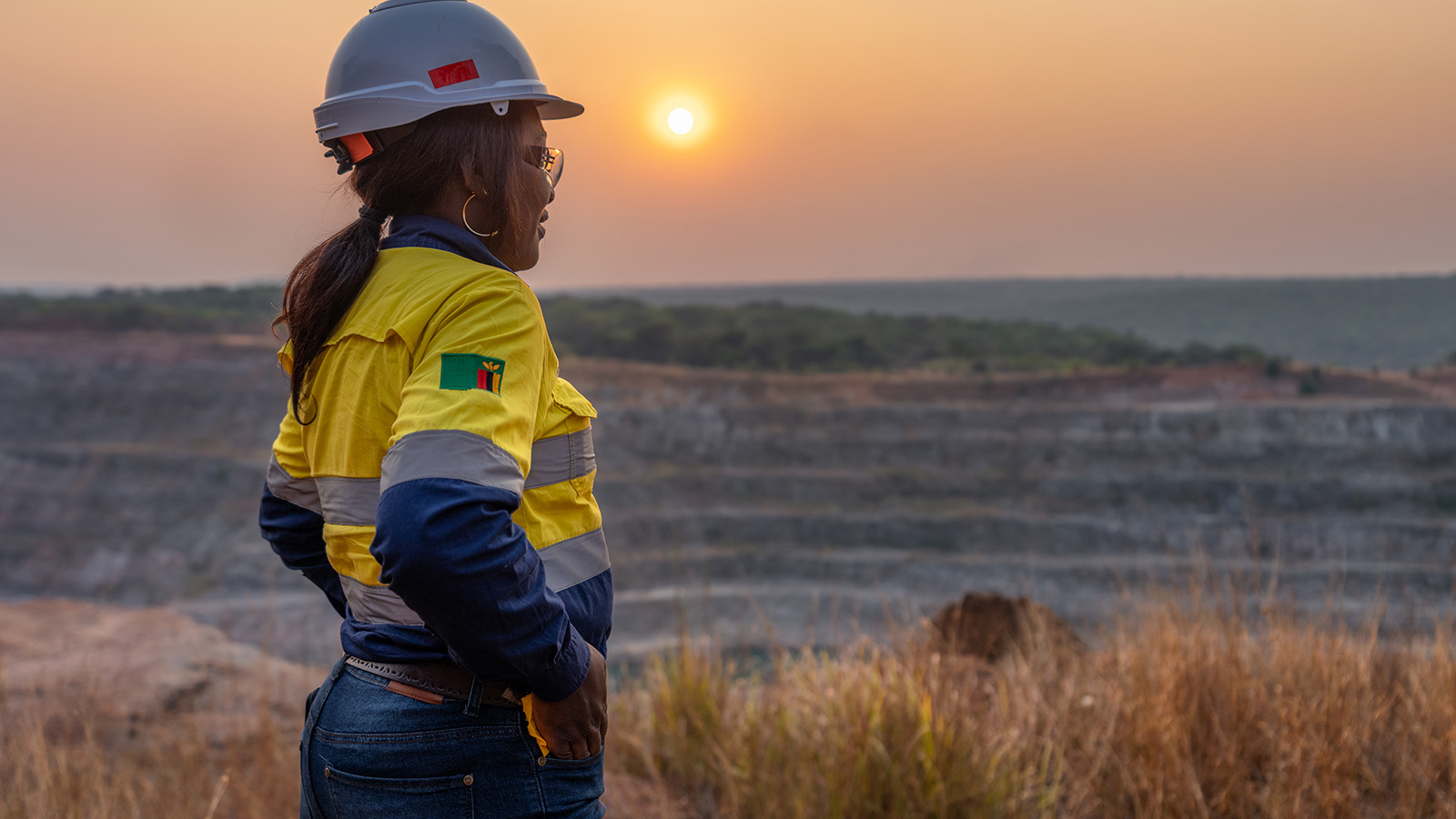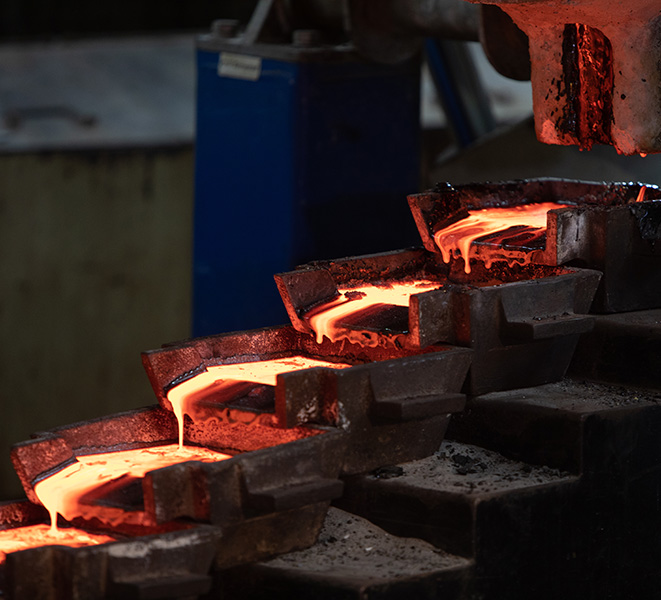
The artisanal and small-scale mining (ASM) sector is a catch all classification for a diverse group of people who employ low-tech methods, with little in the way of equipment and no supervision, to extract metals – mainly gold. These people are poorly placed to deal with a host of associated problems, including poor environmental, health and safety practices, the spread of communicable disease, heightened security risks to neighbouring communities and operations, child and forced labour, inequitable distribution of benefits in communities and an illegal trade in minerals. Many use mercury to process ore – an international environmental concern highlighted by the United Nations Environment Program (UNEP). In a lot of places ASM takes place alongside and in competition with large-scale formal mining: in others it is exploited to fund regional conflict.
It's estimated that 100 million people across the globe depend largely on ASM for their livelihood. They are notoriously unregulated yet the gold they produce is of global economic significance, with volumes around 350 tonnes of gold per annum or twelve percent of total annual world production. Startlingly, though, they account for 90 percent of the total workforce. Addressing the many abuses affecting ASM production and its supply chain is the raison d'être of the Alliance for Responsible Mining (ARM), a pioneering global organisation set up in Colombia in 2004. It seeks to transform global gold production by integrating and formalizing the position of countless artisanal and small-scale miners, creating a certifiable source of ethical gold.
In 2011 ARM created its Fairmined brand. “Fairmined is the social enterprise, market-facing side of the initiative,” explains its Account Manager Kenneth Porter. “We control the Fairmined label which is an assurance label that provides anyone with access to gold and associated precious metals that anyone can be proud of – it is backed by a rigorous third party certification and audit system that ensures that small entrepreneurial mining communities meet world standards for responsible practices.” The market has changed a lot since the launch of Fairmined. “The biggest changes have come from the market, where we have seen interest grow exponentially especially in the last year and a half, helped by initiatives from the 2010 Dodd-Frank Act in the USA, the OECD's Due Diligence Guidance and the LBMA's Responsible Gold Guidance, not to mention the Responsible Jewellery Council (RJC)'s Code of Practices,” says Porter. “We are now seeing major industry players looking at updating their sourcing policies and many of them want to include a source for responsible ASM gold.”
Fairmined started with just three certified mines, in Colombia, Peru and Bolivia. Today 20 more projects are financed and working toward certification. New projects in the West African states of Burkina Faso, Mali and Senegal are well under way, in collaboration with the United Nations Industrial Development Organisation (UNIDO), and a further project is being set up in Mongolia. In the early stages of any project, the priority is to identify and appoint a local partner, called a Producer Support Organisation. “It's vital to have people on the ground who understand the local community, have credibility there and are seen as present in the long term; not just someone who flies in for 18 months,” he says. In some cases such organisations already exist but in others capacity building is required, and ARM is developing training centres to ensure that its project partners are au fait with a whole range of issues related to the ASM sector.
The best motivation for a remote mining community to espouse international best practice and work toward compliance standards comparable with those practised by the formal mining companies is to make them part of a sustainable supply chain. Fairmined's early adopters were a group of small but passionate jewellers who wanted to be certain the gold they were using could be traced. Now, Kenneth Porter is delighted to say, major jewellery brands are coming on board. Among the first to support Fairmined in responsible community mining was the Swiss house of Chopard, 'a pioneer in sustainable luxury'. “They started an innovative project with us six months ago to invest into mining communities one in Colombia one in Bolivia, to bring them to certification. At the Cannes Film Festival last year French star Marion Cotillard arrived at the première of 'Blood Ties' wearing Chopard's Green Carpet Collection jewels, the first two pieces of high jewellery made from sustainable Fairmined gold from South America.
This appearance was followed at the Golden Globe Awards in January this year when Cate Blanchett stepped up to her Best Actress award for 'Blue Jasmine' adorned by Chopard earrings made with Fairmined gold. All the major brands have now expressed interest, so watch this space for further partnership announcements over the coming six months. Fairmined jewellery is currently on sale in stores in the United States, Canada, Great Britain, Spain, Japan and Denmark, and available via online retailers worldwide.
Chopard's pieces are made from fully traceable gold, right back to the certified mine. That entitles them to use the Fairmined trade mark, however there are other more flexible options for gold users to engage with Fairmined. For example, Fairmined Incorporated allows the purchaser to source gold, traceable to the point of refinement. Once the gold has been refined it is integrated into the buyer's legal supply chain. Though they cannot then put the Fairmined label on the finished product, they can take credit at the corporate level in their reports and presentations for the quantity of Fairmined incorporated in their supply chain. “The changes to our business model have really opened up Fairmined to make it more accessible to all different types of market segments and gold buyers,” says Porter.
The 'incorporated' model is now joined by Fairmined Certificates, he continues. “These are a bit like carbon credits. The scheme decouples the physical gold molecule from the certificate so it allows anyone, whether they physically buy gold or not, to contribute to the certified production of Fairmined gold from responsible mining communities.” Under the scheme a brand or organisation that wants to contribute to the production Fairmined may buy certificates though they would never have to take possession of that gold. The certified community would produce that quantity under the standard, and the gold is fully traceable until it is sold into a legal supply chain. The scheme is suitable for larger brands that don't yet have, or are transitioning to, a certified purchasing policy. It also opens it up to the broader mining industry, he says, or a player in the electronics industry. Fairmined Certificates were launched in January, so 2014 is the year he hopes to see them take off.
ARM and Fairmined have quite a hill to climb Porter admits. “We have touched the tip of an iceberg. In Mongolia we have not yet been able to identify mining communities to get to certification, but we have been working with the Mongolian government in a project called Sustainable Artisanal Mining (SAM) Mongolia.” Fairmined is a tool they are considering to promote formalisation in their ASM sector. However he would love to be able to expand much further. China for example has a large ASM gold sector and also a growing middle class creating a significant gold market. In the short to medium term, however, he thinks Africa offers more opportunity. “Our initial projects have revealed a lot of work to be done. The mining communities score a lot lower on formalisation charts than they did in South America so there is a lot of positive transformation to be achieved.”
In time Africa could benefit from the Fairmined Standard that promotes best practices, from social development, environmental protection, water management, safe use of chemicals, gender equality, labour rights, workplace safety and social security. “We have noticed that impact happening with the first community that was certified here in Peru. It had a positive impact on the wider community and the whole sector regionally – for example the AURELSA mine in Peru has become a regional leader for responsible mining; they have opened the door to other mining organisations in the region to visit them and see their best practices and they give workshops to them!” This is transforming the ASM sector from the bottom up.
The demand for certified gold will rise as more jewellers ask for it, so keeping the supply up will be a challenge. The supply of Fairmined gold at present stands at around 350-400 kilogrammes a year. By 2015 he hopes that might rise to a tonne but certification is not a process that can be rushed. Fortunately the international community is beginning to recognise ARM's importance: “We have signed a three year project with the Inter-American Development Bank (IDB), which is the main source of multilateral financing in Latin America, to bring twelve communities to certification. We also signed another project with Pact, which works with USAID, to bring in more money. A lot of development agencies are recognising Fairmined as a tool to formalise ASM.”
Kenneth Porter is confident that more communities will be certified in South America in the coming year, and he would like to see the first African projects mature soon after that, followed by Mongolia. Meanwhile, anyone who wants to know more about Fairmined would do well to attend the jewellery industry's US showcase, the JCK show in Las Vegas in June where he will be promoting the launch of Fairmined gold in North America under the new Fairmined brand identity and logo that was unveiled in February.












